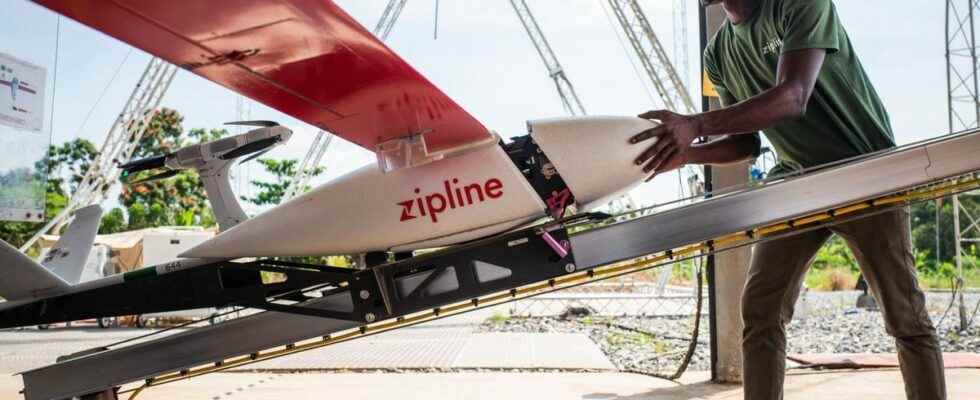Published ,
Reading 1 min.
Transport blood bags by drone. This is what Rwanda has been experimenting with for several years. According to a study by The Lancet, in an emergency, this solution is much faster than going by road.
Since 2016, a contract has linked the government of Rwanda to the American startup Zipline regarding drone blood deliveries. Today, Zipline has two centers in the country, each capable of making up to 500 deliveries per day. Very present in Africa, Zipline is also involved in the distribution of the Covid-19 vaccine in Ghana. In the USA, Zipline makes it possible to deliver drugs and even defibrillators as quickly as possible.
A study published in The Lancet Global Health demonstrates that the delivery of blood bags by drone is particularly suitable for a country like Rwanda, where the overwhelming majority of the inhabitants live very far from any medical facility. However, whether to act urgently after a road accident, to help mothers who have suffered haemorrhages or anemic children, many Rwandans need urgent transfusions every day. In order to face it, the drone appears today as the fastest way to get there.
Of nearly 13,000 drone orders studied between 2017 and 2019, half of them took just under 50 minutes to be delivered. On the road, the median time is estimated at more than two hours! On an equivalent trip, the smallest difference recorded was three minutes and the largest more than three and a half hours, again in favor of drones.
Drone delivery has also reduced wastage of blood components in healthcare facilities. This is because not only is the road trip longer, but it is also much more chaotic and therefore more likely to damage the blood before it is delivered.
